Halloween has a cult following for a reason: candy. But how can you combine it with a classic Mexican tradition, honor those who have left us and devour delicious treats in their name? Let’s dive in.
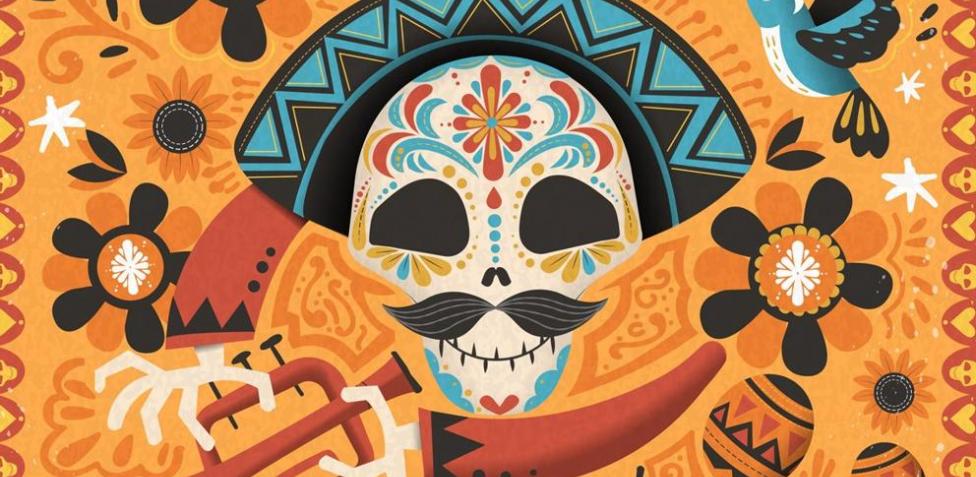
Halloween 2023 can’t come any sooner: the creative costumes, the sneaky tricks, and spicy treats—we can’t possibly get enough!
However, if you’re anything like us and 40% of the US population with a multicultural background, your holiday calendar must include some—if not all—of the most important cultural traditions of your family’s background. For us with Mexican roots, this means celebrating both Halloween and Día de los Muertos, or Day of the Dead, between October and November each year.
While both lively traditions honor the loved ones who’ve left us behind in the living world, there are some differences and many surprising similarities between Día de los Muertos and Halloween. Read on and find out what makes each celebration so special and how you can combine both to honor the dead.
What Is Halloween and Why Do We Celebrate It?
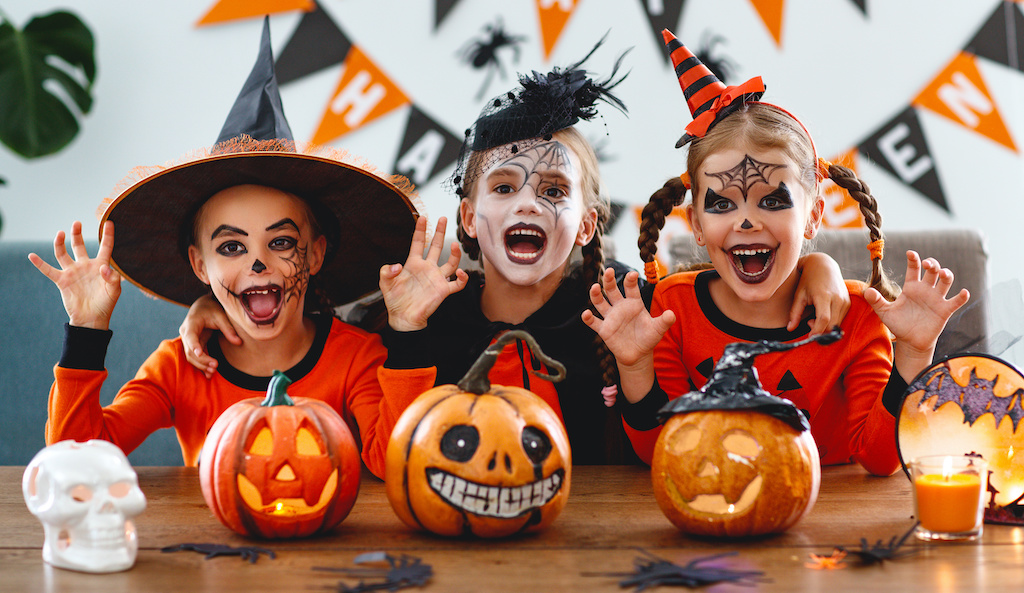
Halloween is a popular American holiday observed in many countries and celebrated yearly on October 31st. This tradition first originated with Samhain, an ancient Celtic festival where people would light bonfires and jack-o-lanterns, enjoy grand feasts, and wear costumes to keep ghosts away.
The modern English name for ‘Halloween’ also traces back to medieval Christian times.
In the eighth century, Pope Gregory III declared November 1st, All Saints Day to honor saints. Soon enough, All Saints Day would incorporate some of the traditions of Samhain. The evening before All Saints Day was known as All Hallows Eve, which would later become Halloween, followed by All Souls’ Day, celebrated on November 2nd.
Popular All Hallows’ Eve rituals included “mirror-gazing,” where people hoped to catch a glimpse of their future by looking into a mirror, and “souling,” which consisted of going door to door asking for “soul cakes” in exchange for prayers for the dead in purgatory.
Eventually, Irish and Scottish immigrants who arrived in America by the second half of the 19th century, Halloween made its way to the cultural zeitgeist. Today, Halloween remains the country’s second largest commercial holiday after Christmas and continues to evolve with great measure.
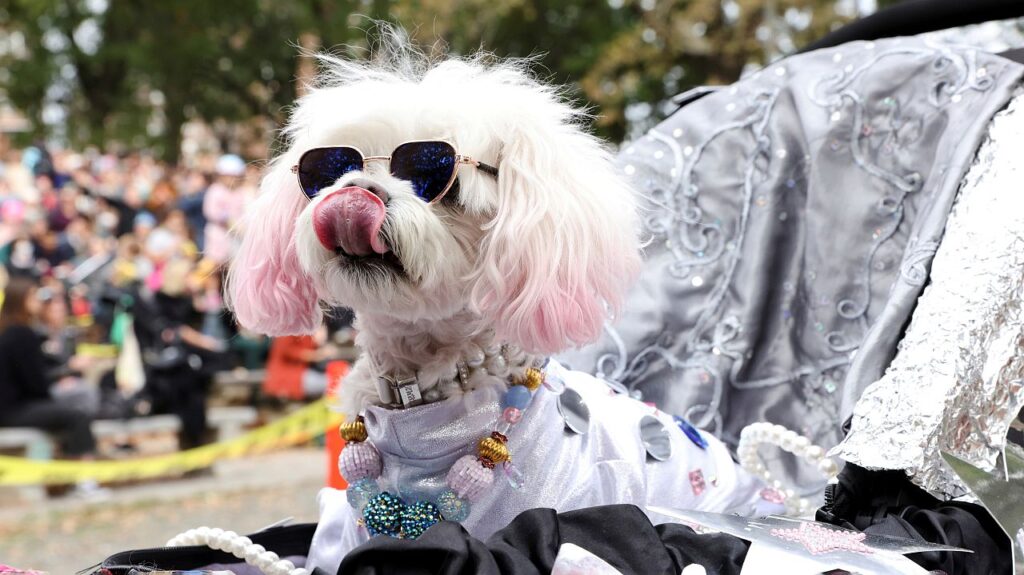
In some communities trunk-or-treating has displaced traditional trick-or-treating where cars, SUVs, and trucks get dressed with DIY’ed, on-theme decor. Cities around the country host a sleuth of fun parades, like New York City’s Tompkins Square Halloween Dog Parade and Austin’s Viva la Vida Parade.
What Is Día de los Muertos and Why Do We Celebrate It?
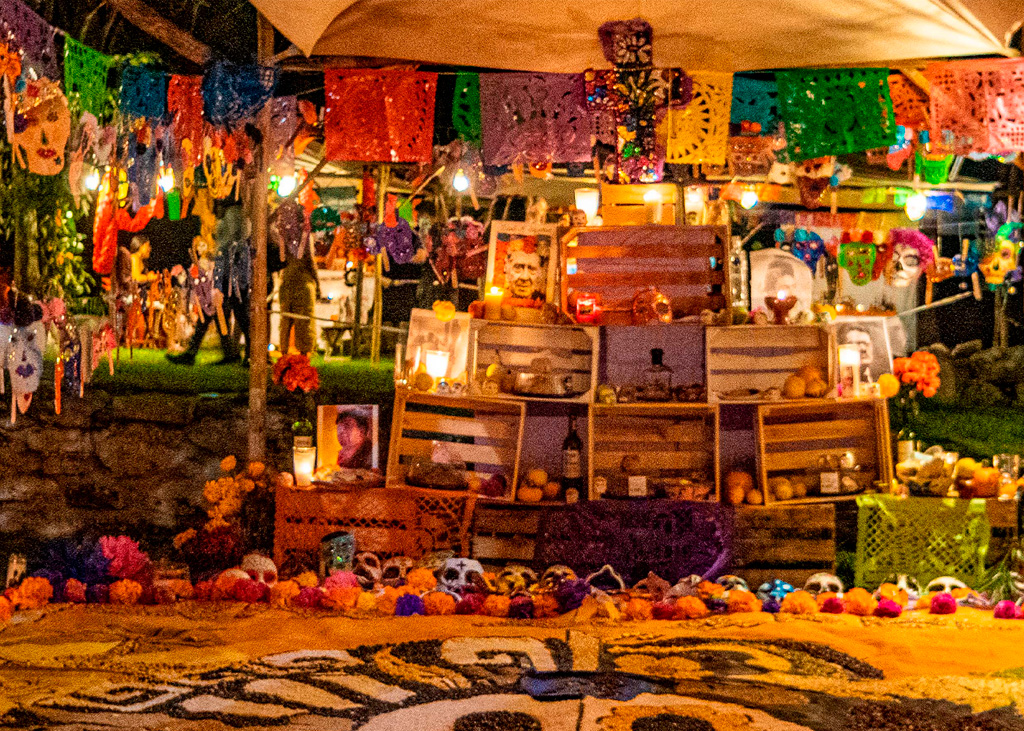
El Día de los Muertos, or The Day of the Dead, is a popular holiday that originated in Mexico which is celebrated yearly between November 1st and 2nd. This rich celebration combines ancient Aztec customs of celebrating ancestors with All Souls’ Day that was brought to Mexico in the early 1500s by Spanish invaders.
Traditionally, November 1st is the day Mexican families celebrate child spirits or “little angels,” while November 2nd celebrates adult souls. It’s said that on Day of the Dead, the lines between the real world and the spirit world disappear.
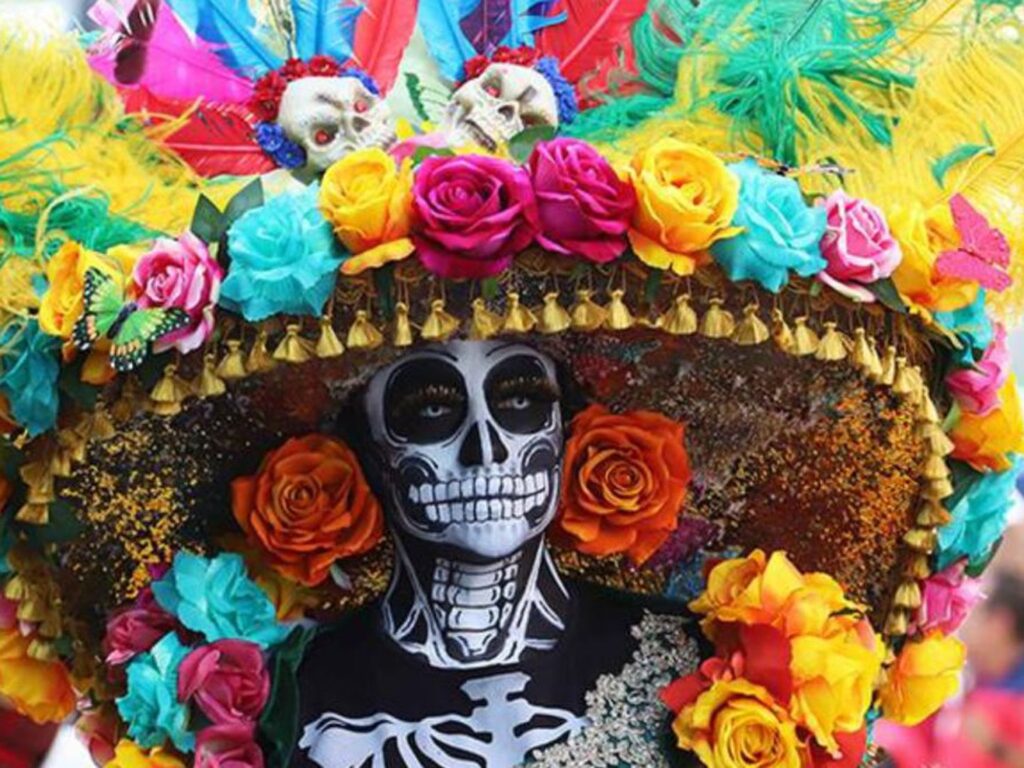
On Día de los Muertos, families and friends gather to remember and honor friends and family members who have died. Everyone chips in with building the ofrendas or home altars, also known as altares, which contain photos and candles, imagery of a saint or the Virgin, plus the favorite foods and beverages of the departed. Each and every single one of the objects on the ofrenda have a significant meaning, both cultural and individual.
Every family has its own particular way of setting up their ofrendas. They range from a flat, one-level altar, to three (heaven, earth, and the underworld) and up to seven levels. Other important elements of an ofrenda include: water, Pan de Muerto (bread of the dead), sugar and/or chocolate skulls, toys for the children, salt, incense, ceramic figurines, monarch butterflies, marigold flowers, papel picado (colorful paper decorations), and crosses made from seeds, salt, or flowers.
Lots of museums and public spaces also join the celebrations with large-scale installations and altars for notable people. In many states across Mexico, some people even have picnics at cemeteries and spend all night beside the graves of their relatives.
Today, many parts of Latin America also celebrate Day of the Dead with slightly different customs and traditions.
What Is The Difference Between Halloween And Día De Los Muertos?
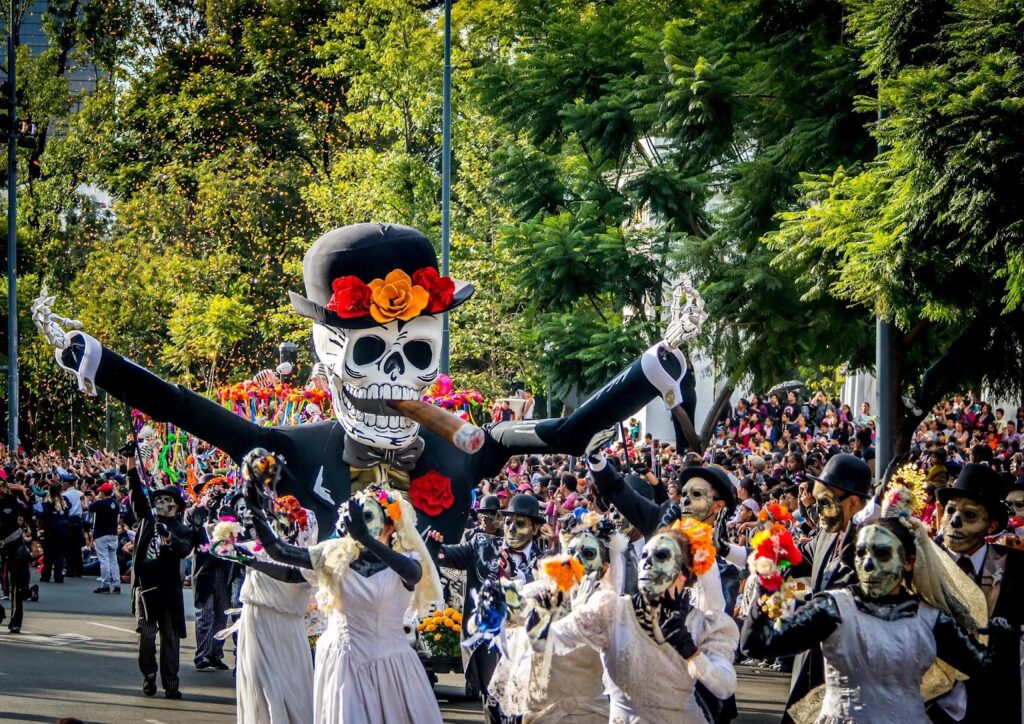
Even though both holidays are considered scary in one way or another, Halloween and Día de los Muertos are quite different from one another.
Rather than being afraid of the dead, Día de los Muertos remembers them and celebrates the afterlife. This is the day where we invite those spirits back into our homes to be part of the family once again as a show of respect.
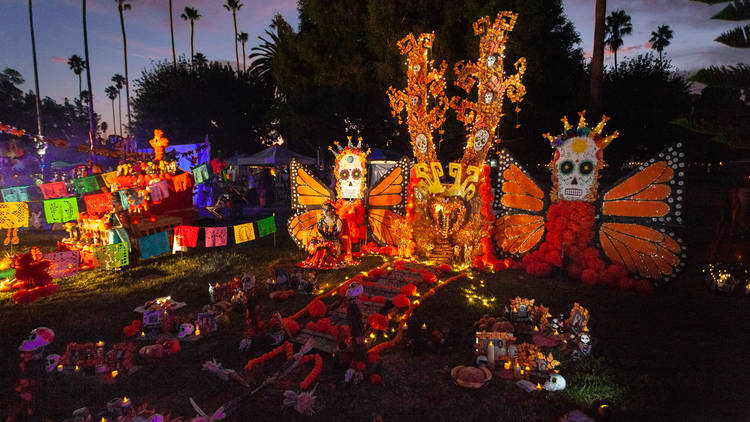
There are no grim or gory decorations either; the Day of the Dead is known globally for its vibrant artwork and lively, huge gatherings. For the occasion, we trade witches for elaborate sugar skull makeup and masks.
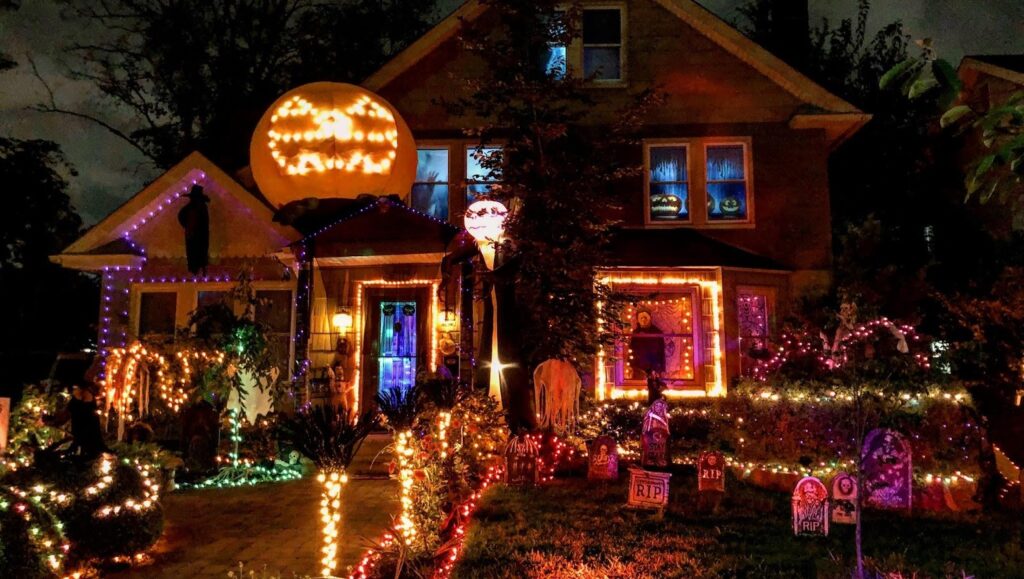
Halloween, on the other hand, is all about darkness, death, ghosts, witches, candy. Costumes can be as frightening, funny, or cute as we want them to be, and we even get to invite our fur babies to the celebration.
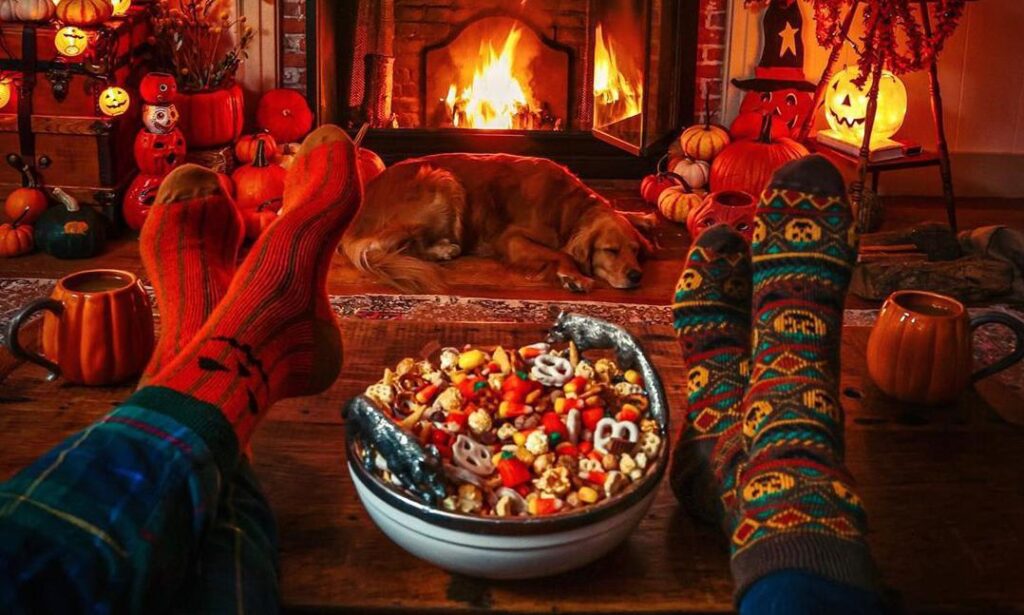
Next comes trick-or-treating, where we get to knock on our neighbors’ doors in hopes of not only good candy, but spicy chamoy candy, too. By the end of the day, we can eat all the sweets we want in front of the TV watching a scary movie or funny series. Any leftover candy will be devoured in the next week or so!
How Is Día De Los Muertos Similar To Halloween?
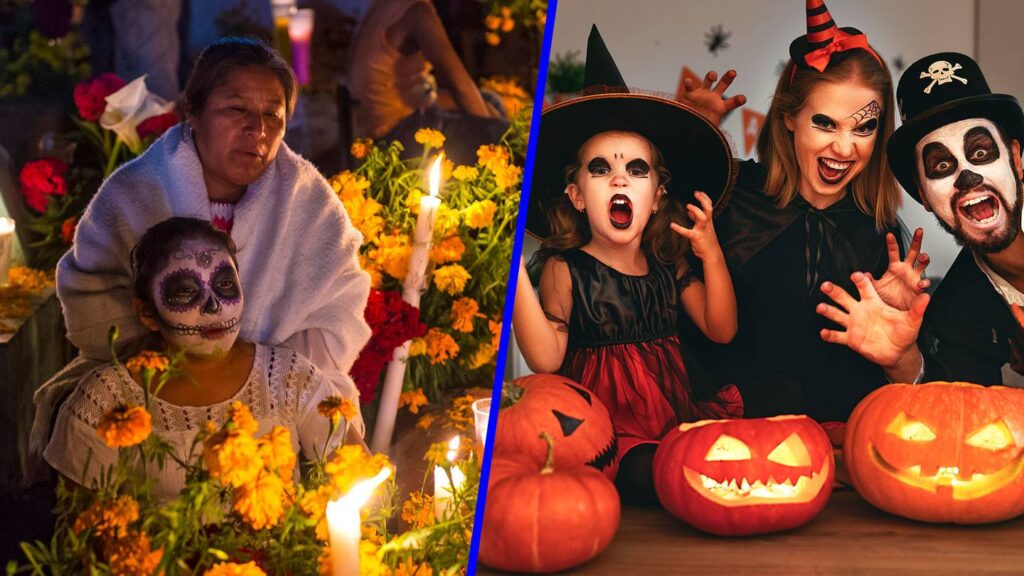
Both Halloween and Día de los Muertos are unique and beautiful in their own way—but alas! We still found some similarities between each other that make learning the many ways we can celebrate the afterlife even more special.
1. Halloween and Día de los Muertos have catholic roots that once signified autumnal harvesting.
2. You will find elaborate decorations and costumes during Halloween and Day of the Dead.
3. No Día de los Muertos or Halloween is complete without big feasts and public gatherings.
4. Día de los Muertos and Halloween are celebrations of life and death.
5. Day of the Dead and Halloween bring family and friends together.
And, as you may have guessed, many communities in the US join in the Day of the Dead celebrations just as much as Mexicans love trick-or-treating and dressing up for Halloween. However you decide to celebrate and honor the dead this year, make sure you do so with love and respect for everyone.
How Do People Around The World Celebrate And Honor The Dead?
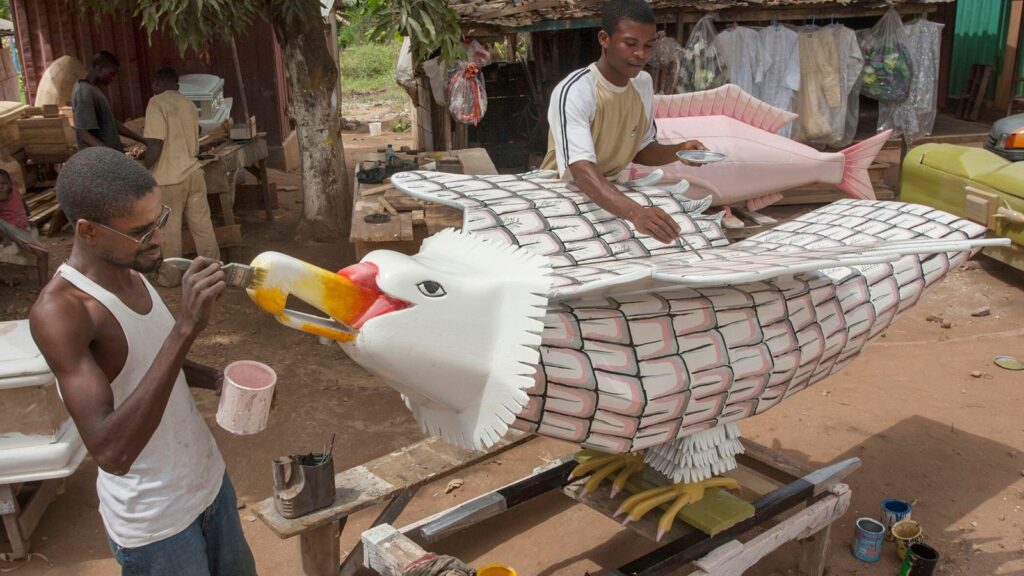
While celebrating life and death is deep-rooted in the cultural tapestry of both the US and Mexico with Halloween and Day of the Dead, there are many other communities that celebrate the afterlife and honor the dead.
1. Ghana, West Africa
In Ghana, fantasy coffins symbolize the deceased’s life and profession. Imagination runs wild when it comes to these fantasy coffins, which range from airplane coffins for pilots to truck-shaped coffins for drivers.
Alternatively, families may choose coffins as a tribute to a lost loved one, such as animals embodying the character of the deceased. An owl coffin could symbolize wisdom, or a lion could represent courage.
2. Bali, Indonesia
Death is celebrated in Bali as the soul’s entry into reincarnation. For Balinese people, the body is just a shell or temporary home for the soul.
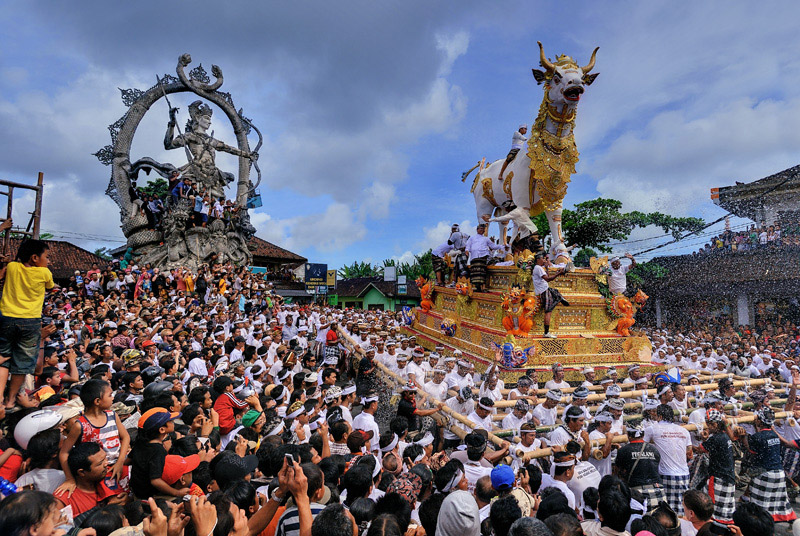
Ngaben is a cremation ceremony where family and friends gather to pay their respects to their loved one. During Ngaben, families don’t weep or mourn because their loved one is in heaven. During the all-day celebration, a sacred dance is performed early in the morning by the departed one’s village and after a body is cremated, the ashes are sent to sea.
3. Japan
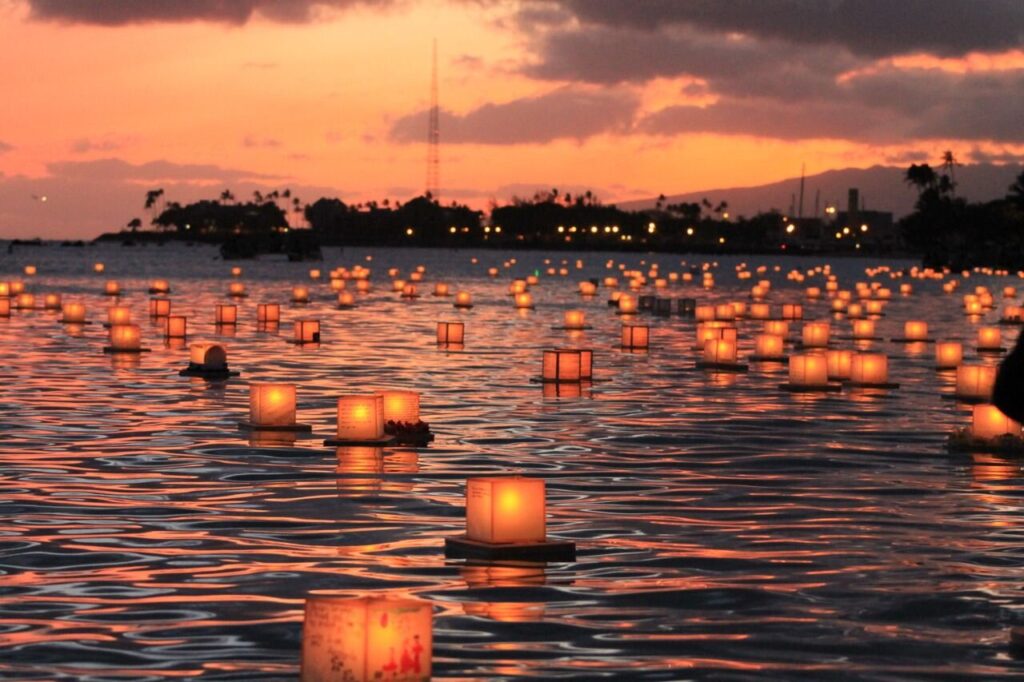
Japan’s Obon is a three-day festival that has been around for 500 years.
Similar to Día de los Muertos, Obon is a time to pay respects to the dead and honor ancestral spirits. It is also believed that ancestors return to reunite with the living. Obon is a time when families visit their ancestors’ graves and offer food and drink sacrifices.
Now tell us…
How will you celebrate the afterlife and honor the dead this 2023? Will you dive into the scary Halloween tradition, will you put those art skills into practice for your Día de los Muertos sugar skull makeup, or both?
Let us know in the comments below!
